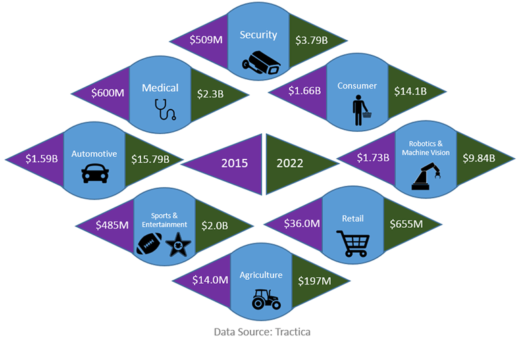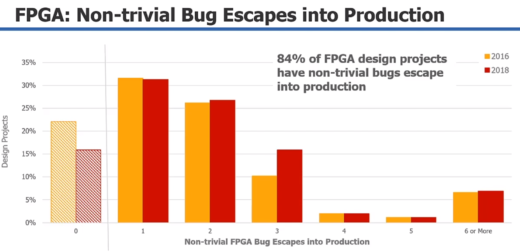Article Roundup: Engineering the Perfect Roasted Turkey, Computer Vision Rising, Electric Aircraft Propulsion, Photonics & Verification Trends
- How to Cook a Turkey like an Engineer
- The Rapid Rise of Computer Vision
- Siemens Electric Aircraft Propulsion Unit: Inside the Digital Twin Design Strategy
- Photonics: Where Heat is a Good Thing
- Reduction In First Silicon Success
How to Cook a Turkey like an Engineer
Siemens PLM
 A nicely roasted turkey can make or break your Thanksgiving feast. Luckily for home cooks everywhere, Siemens’ software is here to help achieve poultry perfection. We used our advanced CFD software to create a digital twin of a turkey in a convection oven to analyze how the hot air moved around the bird. This blog covers the results and key lessons we learned about roasting the perfect turkey.
A nicely roasted turkey can make or break your Thanksgiving feast. Luckily for home cooks everywhere, Siemens’ software is here to help achieve poultry perfection. We used our advanced CFD software to create a digital twin of a turkey in a convection oven to analyze how the hot air moved around the bird. This blog covers the results and key lessons we learned about roasting the perfect turkey.
The Rapid Rise of Computer Vision
Electronic Design
 Computer vision and machine learning algorithms undergo rapid evolution due to a steady stream of technological advancements. Design teams cannot afford to start from zero anytime there is a change in the requirements or implementation of the computer vision algorithm. High-level synthesis enables teams to design and verify an algorithm in hardware while the specifications and requirements continue to evolve. As a result, the design team can adapt to dynamic requirements without starting from scratch.
Computer vision and machine learning algorithms undergo rapid evolution due to a steady stream of technological advancements. Design teams cannot afford to start from zero anytime there is a change in the requirements or implementation of the computer vision algorithm. High-level synthesis enables teams to design and verify an algorithm in hardware while the specifications and requirements continue to evolve. As a result, the design team can adapt to dynamic requirements without starting from scratch.
Siemens Electric Aircraft Propulsion Unit: Inside the Digital Twin Design Strategy
Engineering.com
 All electric aircraft are expected to become the industry standard by 2050, with hybrid-electric propulsion systems already entering the market. Hybrid electric and all electric aircraft propulsion systems are more reliable and efficient than traditional engines because the electric motors can operate without gearboxes and generate electricity on descent. This article examines Siemens’ digital twin approach to designing their highly-efficient SP260D electric motor, ideal for small fully electric and larger hybrid electric aircraft.
All electric aircraft are expected to become the industry standard by 2050, with hybrid-electric propulsion systems already entering the market. Hybrid electric and all electric aircraft propulsion systems are more reliable and efficient than traditional engines because the electric motors can operate without gearboxes and generate electricity on descent. This article examines Siemens’ digital twin approach to designing their highly-efficient SP260D electric motor, ideal for small fully electric and larger hybrid electric aircraft.
Photonics: Where Heat is a Good Thing
Electronic Engineering Journal
Most chip designers are focused on creating low-power circuits that efficiently dissipate heat to stay cool. Photonics chips, on the other hand, require heat; so much so that designers working on photonics chips must add heaters to maintain a constant temperature. This is called electro-optical design, and Mentor’s new LightSuite Photonic Compiler helps automate this task. Read more about photonics design and the new solution in this article.
Reduction In First Silicon Success
SemiEngineering
 The 2018 Wilson Research Group ASIC and FPGA Functional Verification Study discovered two notable trends. First, ASIC first-silicon success rate dropped 4%, with 26% of projects achieving first silicon success. Second, only 16% of FPGA projects made it to production with no bug escapes, a much greater decline than the ASIC first-silicon success rate. As FPGA design approaches the complexity of ASICs, teams must continue to adopt new verification techniques to find and resolve bugs.
The 2018 Wilson Research Group ASIC and FPGA Functional Verification Study discovered two notable trends. First, ASIC first-silicon success rate dropped 4%, with 26% of projects achieving first silicon success. Second, only 16% of FPGA projects made it to production with no bug escapes, a much greater decline than the ASIC first-silicon success rate. As FPGA design approaches the complexity of ASICs, teams must continue to adopt new verification techniques to find and resolve bugs.
